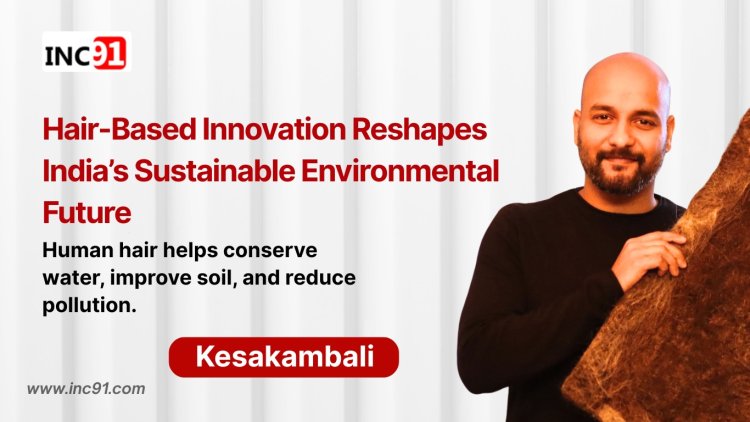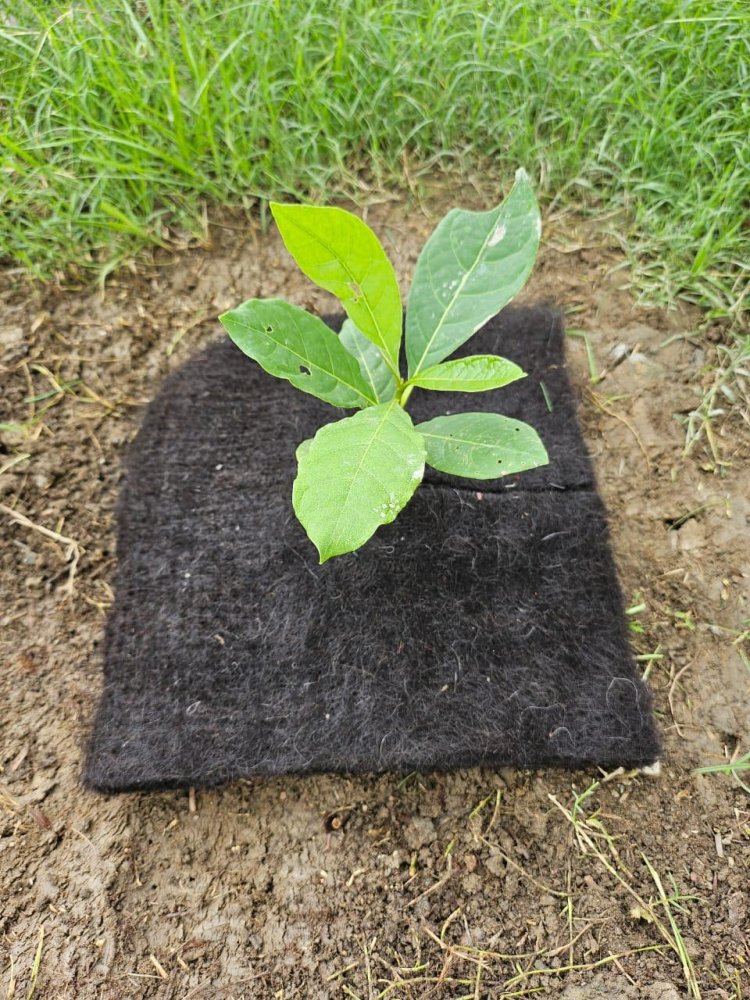India’s First Hair-Based Environmental Tech Solution: How Kesakambali Foundation Is Turning Hair into Black Gold
Kesakambali Foundation transforms human hair into eco-mats, tackling water loss, soil erosion, and pollution with India’s first hair-based solution.

In an age where sustainability is no longer optional, Kesakambali Foundation is proving that environmental innovation can come from the most unexpected sources—even human hair.
Rooted in the principles of circular economy and guided by the needs of rural India, the Foundation is pioneering the country’s first large-scale environmental tech solutions made from discarded human hair. Founded in 2023, Kesakambali is reshaping how India thinks about waste, agriculture, and water conservation—all by giving new purpose to a misunderstood material.
The Numbers Behind the Mission
-
India uses nearly 83% of its freshwater—over 600 billion cubic meters annually—for agriculture.
-
Yet, 60% of irrigation water is lost due to evaporation, seepage, and inefficiency.
-
Every kilogram of hair used in Kesakambali’s mats can conserve up to 20,000 litres of water annually.
-
A single 60x60 cm hair mat retains 2–3 litres of water per day—critical for drought-prone regions.
Two Initiatives, One Ecosystem

Kesakambali Foundation operates under two flagship programs:
-
Bhoomi Sanchay – Biodegradable hair mats deployed on farms to reduce soil erosion, suppress weeds, retain moisture, and improve soil health.
-
Jala Sanchay – Hair mats used as natural oil absorbents in water bodies, removing petroleum byproducts, chemicals, and heavy metals.
Both address India’s twin challenges: agricultural water stress and environmental contamination.
Building Ethical Alternatives to Hair Smuggling
While India’s hair trade has long focused on extensions and wigs, Kesakambali introduces a more ethical and sustainable use.
The Foundation creates a donation-to-impact model that ensures:
-
Traceability in the hair supply chain
-
Combatting illegal smuggling
-
Supporting community-driven environmental outcomes
Key Programs and Community Involvement
-
Certified Hairdresser Program: Salons partner with Kesakambali to ethically collect hair waste and get trained in sustainability.
-
Hair Donation Drives: Individuals donate hair as a renewable resource.
-
Open-Source Research: Collaborations with scientists and NGOs to publish data and impact reports.
-
CSR Partnerships: Corporates support Kesakambali’s water conservation and agro-ecology efforts under ESG mandates.
With India’s population projected to reach 1.7 billion by 2050 and climate change accelerating, scalable low-cost solutions are urgent.
From Temples to Farmlands: The Spark Behind Kesakambali
Much of India’s donated hair is exported to global markets with little traceability. Kesakambali reclaims this resource for public good, aligning ethics, science, and sustainability to bridge the gap between surplus hair waste and climate resilience.
Hair Matters: Turning Waste into Eco-Weapons
Bhoomi Sanchay: Restoring Soil Health
Hair mats reduce evaporation, improve soil aeration, boost microbial activity, enhance crop yield, and decompose into nitrogen-rich fertilizer.
Jala Sanchay: Reviving Water Bodies
Hair-based mats deployed in ponds, lakes, and rivers absorb oil, toxins, and heavy metals—helping regenerate aquatic ecosystems.
Innovation Without Precedent
Kesakambali is repurposing human hair for environmental resilience—an approach with no precedent in India.
By linking agriculture and the hair industry, the Foundation creates a circular feedback loop with long-term impacts.
Changing Perceptions, One Strand at a Time
Traditionally, hair was valued only as a religious token or cosmetic material. Kesakambali proves—through field trials—that hair can be a powerful tool for regenerative change.
A Tangle of Myths and Truths
-
Myth: All donated hair becomes wigs for cancer patients.
Truth: Much is exported, auctioned, or diverted. -
Myth: Human hair is waste.
Truth: It is biodegradable, nitrogen-rich, and absorbent—perfect for restoration.
Milestones and Impact
By channeling hair into soil and water restoration, Kesakambali demonstrates how misunderstood resources can become life-giving inputs.
Vision 2030: Hair Today, Greener Tomorrow
By 2030, Kesakambali aims to:
-
Divert 50% of hair waste into regenerative use
-
Restore 1,000+ water bodies
-
Support climate-smart farming in 10,000+ villages
-
Promote ethical hair donation
-
Create 10,000+ rural green jobs
Filling a Market Gap
Currently, there is no national system for structured hair collection or awareness about its ecological value. Kesakambali fills this gap with community training, R&D, awareness campaigns, and scalable deployment.
Advice from the Roots
"Build something that gives back. Solve a real problem. Don’t chase valuation—chase value."
Rooted in ethics, driven by science, and inspired by purpose, Kesakambali proves that solutions can come from even the most unexpected materials.
Connect with the Change
Website: www.kesakambali.org
Instagram: @kesakambali
LinkedIn: Rahul Gupta
What's Your Reaction?




















